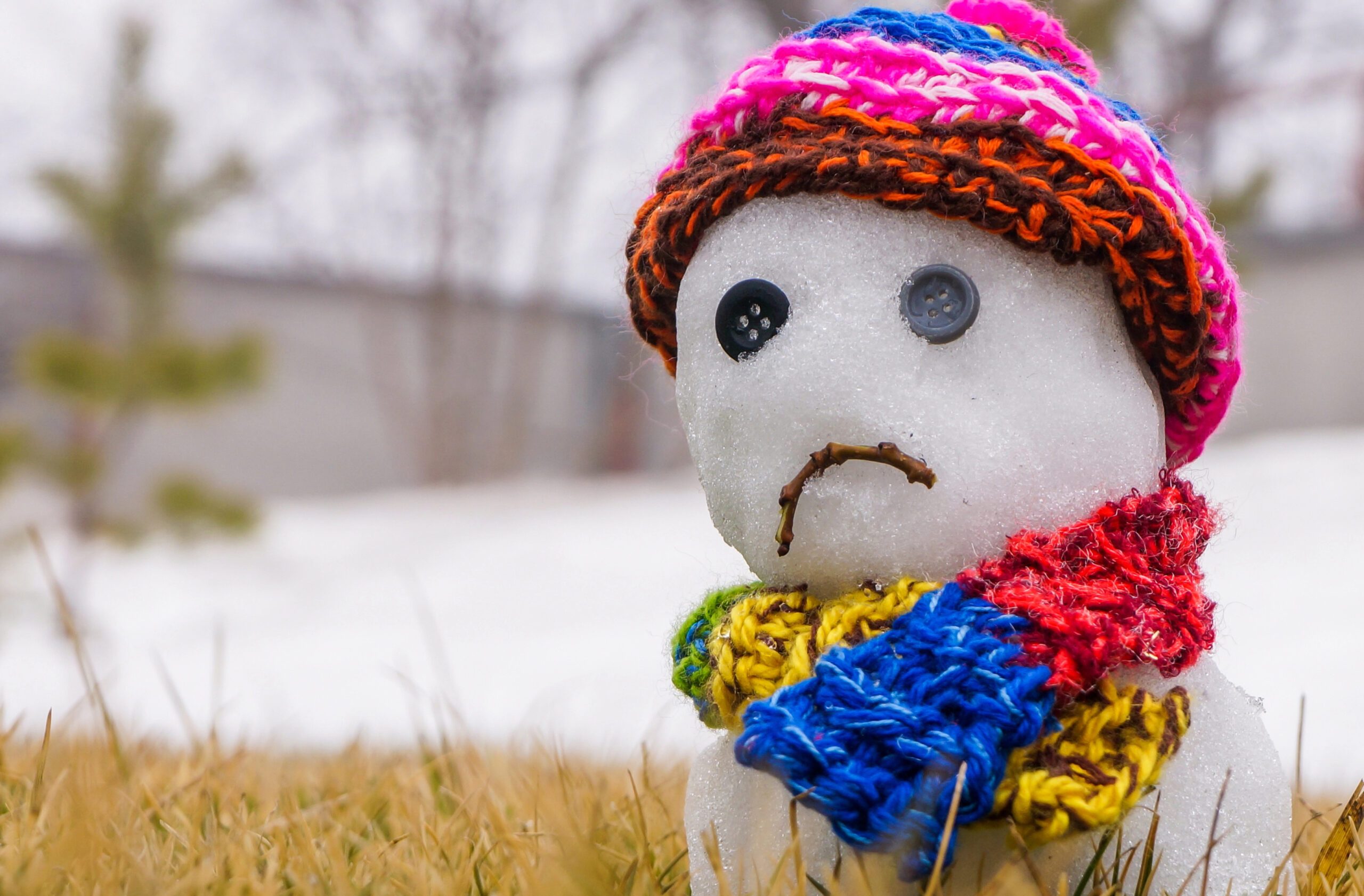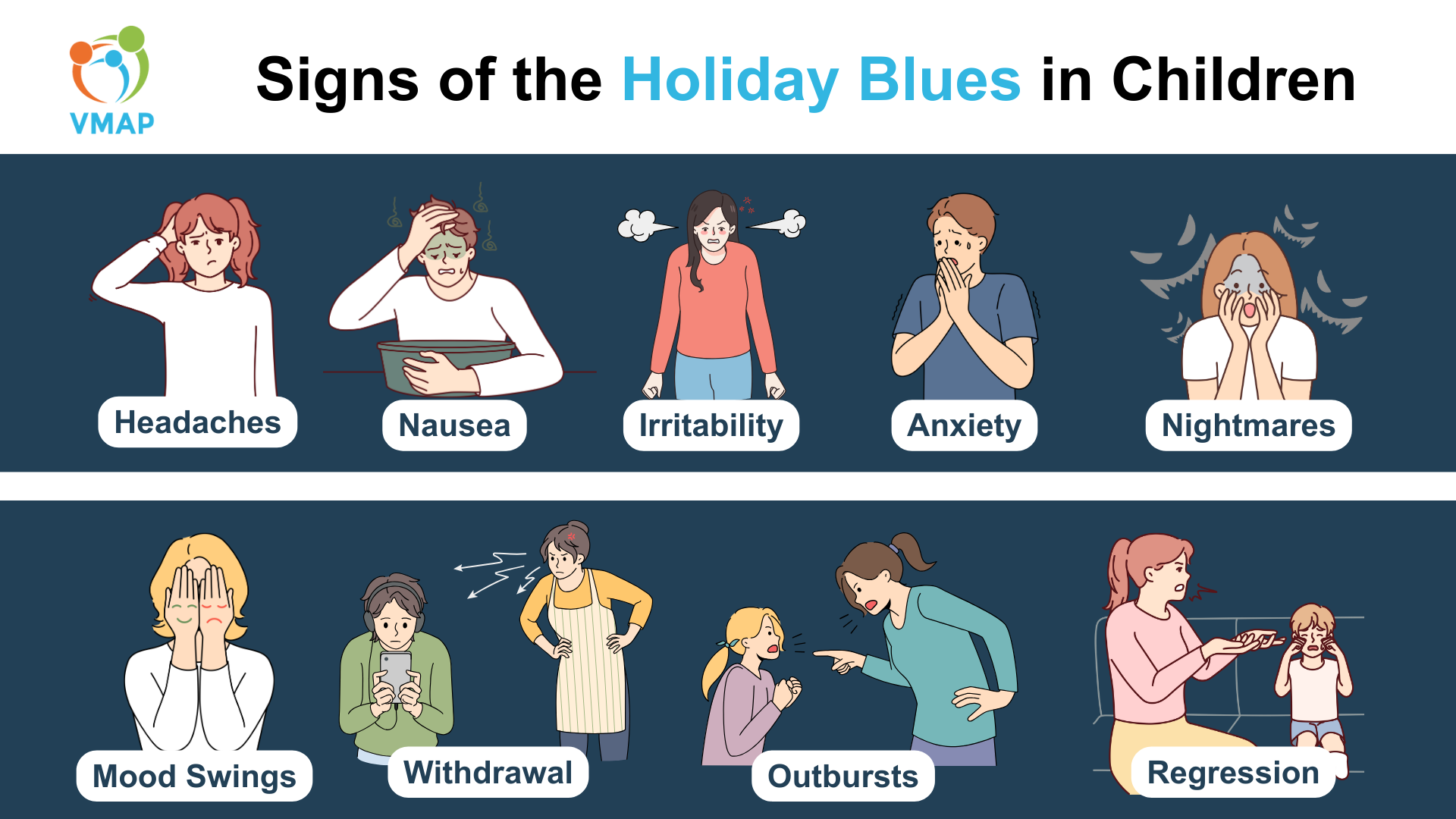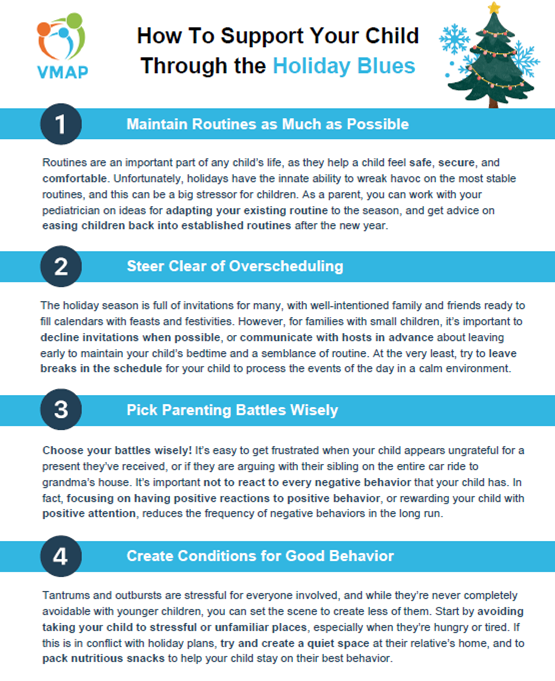The Holiday Blues: 4 Ways to Help Your Pediatric Patients
What Are The Holiday Blues?
All across America, the holiday season comes into full swing between Thanksgiving and New Years. During this stretch of time, families around the country are enjoying holiday traditions, time off from work, traveling to see friends and family, and much more. While it’s thought to be “the most wonderful time of the year” for those celebrating the holidays, this isn’t the case for everyone. Many expect to experience joy and comfort from partaking in beloved traditions and being with family during this season, but instead find themselves stressed, overwhelmed, and depressed. This temporary and situational shift in mood is known as the “holiday blues”, and it affects adults and children similarly (Bright Futures).

The Difference Between Holiday Blues & Seasonal Affective Disorder (SAD)
Before we continue, it’s important to understand the difference between holiday blues and a mental health condition called “Seasonal Affective Disorder”, or SAD. Holiday blues is often used interchangeably with Seasonal Affective Disorder, but they are not the same thing. Seasonal Affective Disorder is classified as a type of depression, and it affects nearly 10 million Americans every year (NIMH). Unlike other types of depression, this condition has a cyclical and seasonal pattern. This means that those who have this condition often begin experiencing symptoms of depression when daylight hours become shorter during the fall and winter, and see these symptoms lessen during the warmer, brighter months of the year. There’s been a great deal of research into why Seasonal Affective Disorder operates this way, and it is now widely believed that this condition can be triggered by a Vitamin D deficiency brought on by lower light levels during colder months (Penckofer, Kouba, Byrn, & Ferrans, 2010).
On the other hand, holiday blues are not considered a mental illness, but rather, a troubling and potentially disruptive drop in mood that is directly linked to situational stress revolving around the holiday season (NAMI). If someone is dealing with noticeable depressive episodes during specific seasons for at least two consecutive years, that’s when we begin to be concerned about Seasonal Affective Disorder instead (Oregon Health News Blog). Most importantly, even though the holiday blues are not a mental illness, this situational stress can often aggravate existing mental health conditions. For example, in a 2014 survey by the National Alliance on Mental Illness, 64% of those with mental illness reported that the holidays make their conditions worse.
How Holiday Stress Can Impact Children
Most of the focus when it comes to holiday blues is on adults. However, children and adolescents are just as likely to experience this seasonal stress, which is in accordance with the highest rate of child psychiatric hospitalizations occurring during the winter months. There are many situations that can trigger holiday blues in children and teens, and stressed parents can aggravate these triggers:
- irregular sleep schedules
- being in the company of unfamiliar or rarely-seen relatives
- high expectations for their behavior and reactions
- overindulgence of candy and treats
- a shift in their regular routine
Signs and Symptoms of Holiday Blues in Children
Some common signs and symptoms of holiday blues and stress in children include:

- Increase in headaches or migraines, especially after an event
- Nausea, upset stomach, or complaining of frequent stomach pain
- Frequent bursts of irritability and anger
- Anxiety and inability to relax or settle down
- Nightmares or other sleep disturbances, including undersleeping and oversleeping
- Mood swings from highs to lows, which may occur very quickly
- Withdrawal and isolation from traditions and family gatherings
- Isolation or withdrawal from family and friends
- Lack of interest or motivation with school, sports, or other activities
- Irritable behavior or moods (extreme highs to extreme lows)
- Outbursts that are out-of-character or seem unwarranted
- Regression to behaviors they had when they were younger, like bedwetting and tantrums
Helping Pediatric Patients Through the Holiday Blues
During this holiday season, physicians like yourself may experience an uptick in parents calling in concerned about their child’s behavior and wondering what to do, or you may notice that your pediatric patients seem more subdued or stressed than usual. This is a great opportunity for you to educate parents about the holiday blues, help them understand the symptoms and signs, and give them some advice for how they can support their child through this time.
Here are four tips that you can offer parents to help them reduce holiday stress and blues in their children, along with a printable resource to share with parents when they visit your office.
1. Maintain routines as much as possible
Routines are an important part of any child’s life, as they help a child feel safe, secure, and comfortable (Montessori Academy). Holidays have the innate ability to wreak havoc on the most stable routines, and this can be a big stressor for children. As a pediatrician, you can impress upon parents the importance of routines, and help them figure out ways to adapt their existing routine to the season itself, along with how to ease children back into established routines after the new year.
2. Steer clear of overscheduling
The holiday season is full of invitations for many, with well-intentioned family and friends ready to fill calendars with feasts and festivities. However, it’s best to advise parents to decline invitations when possible, or to communicate with hosts in advance about leaving early to maintain their child’s bedtime and a semblance of routine. At the very least, remind them to leave breaks in the schedule for their child to process the events of the day in a calm, quiet environment.
3. Pick parenting battles wisely
Encourage parents to pick their battles wisely. It’s easy to get frustrated when a child appears ungrateful for a present they’ve received, or if they are arguing with their sibling on the entire car ride to grandma’s house. Remind them that it’s important not to react to every negative behavior that a child has, and that focusing on positive reactions to positive behavior, or rewarding the child with positive attention, reduces the frequency of negative behaviors in the long run (Indiana University).
4. Create conditions for good behavior
As a pediatrician, you are well-acquainted with children at their worst—you’ve likely seen some terrific tantrums during your career. Tantrums and outbursts are stressful for everyone involved, and while they’re never completely avoidable with younger children, parents can set the scene to create less of them. Advise parents to avoid taking their child to stressful or unfamiliar places when they’re hungry or tired. If this is in conflict with holiday plans, encourage parents to try and create a quiet space at their relative’s home, and to pack nutritious snacks to help children stay on their best behavior.
We hope this has helped you gain a better understanding of the holiday blues, how they impact your pediatric patients, and how you can help parents be prepared to support their children through the stress of the holidays.
As always, VMAP is here to support physicians like you, especially during the holiday season! Register for our VMAP Line today to access free professional mental and behavioral health consultations, resource referrals and care navigation, and early childhood specialists to assist you with your patients throughout their childhood and adolescence.





